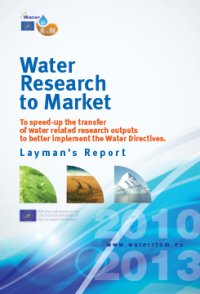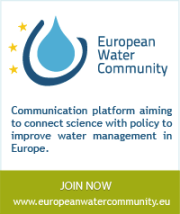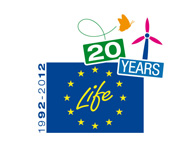MICROALGAE
| Output characterisation | |
| OUTPUT SENTENCE | Photobioreactors in wastewater treatment |
| OUTPUT TYPE | prototype |
| WATER TOPIC | Urban pollution |
| OUTPUT DESCRIPTION | Explore the possibilities of implementation (economic and environmental), within the usual system of urban waste water treatment (and industrial), a technology such as microalgae photobioreactors, which allows not only a higher degree of purification, including recycling, wastewater but also the fixation of significant amounts of CO2 and generating a high-value biomass as raw material for the generation of biofuel or other uses. |
| STATE OF DEVELOPMENT | Evaluation pilot scale (production capacity and quality of biomass, CO2 fixation capacity of the reactor including an analysis of the ecological footprint, effluent quality after treatment with microalgae, economic evaluation of the process. |
| INNOVATIVE ASPECTS AND ADVANTAGES | Low operating costs. The process has no organic carbon requirements for nitrogen removal and phosphorus, which makes an attractive possibility for treating secondary effluent.The oxygenated effluent discharge to the receiving environment. The possibility of recycling the nitrogen and phosphorus assimilated as biomass with a high content of oils for use as feedstock in the production of biofuels. Being a biological process that uses primary producers is a potential technology fixation of atmospheric CO2. |
| TRANSFERABILITY | They can be located on land unsuitable for conventional agriculture and forestry (clay and high hardness), and can use water such as wastewater or brackish minimizing the effect of competition. |
| POTENTIAL USERS/CLIENTS | Domestic wastewater treatment plants and industrial biofuel producers, etc. |
| Estimation of risks | |
| Steps ahead | |
| NEXT STEPS TO ACHIEVE THE STATUS 'READY TO USE' | It plans to develop experimental pilot plant also working on the Wastewater Treatment Station of Arcos de la Frontera. |
| TYPE OF PARTNER FOR THE NEXT DEVELOPMENTS | area of activity: Wastewater treatment, biofuels and CO2 capture. |
| TASKS TO BE PERFORMED | Major scientific research and testing on large scales for more specific results and encourage governments make significant investments to develop. |
| COLLABORATION DETAILS | Real life testing necessary (different types of algae, coefficients yields with real wastewater, etc..). Data that could be calculated more accurately from research results. Use in public and private transport. |
| Estimation of ressources | |
| RESOURCES FOR NEXT STEPS | Directive 2003/30/EC (Decree 1700/2003) on promoting the use of biofuels. Real Decree 509/1996, Real Decree 2116/1998 concerning urban waste water treatment, National Water Plan 2007-2015 |
| Contact | |
| TECHNICAL CONTACT | José Antonio Perales Vargas-Machuca |
| COUNTRY | SPAIN |
| WEBSITE | http://www.uca.es/es/ |
| WATER RTOM CONTACT | A21 |
| Background | |
| PROJECT NAME | Microalgae: water purification plants, biofuel production and CO2 fixation |
| PROJECT ACRONYM | MICROALGAE |
| PROJECT DESCRIPTION | Studying the feasibility of integrating a nutrient removal process by culturing in photobioreactors for microalgal species of high oil content in waste water treatment. |
| PROJECT LOCATION | SPAIN |
| FUNDING ORGANISATION | 'Ministerio de Ciencia e Innovación en el marco del VI Plan Nacional de Investigación Científica, Desarrollo e Innovación Tecnológica 2008-2011, |




